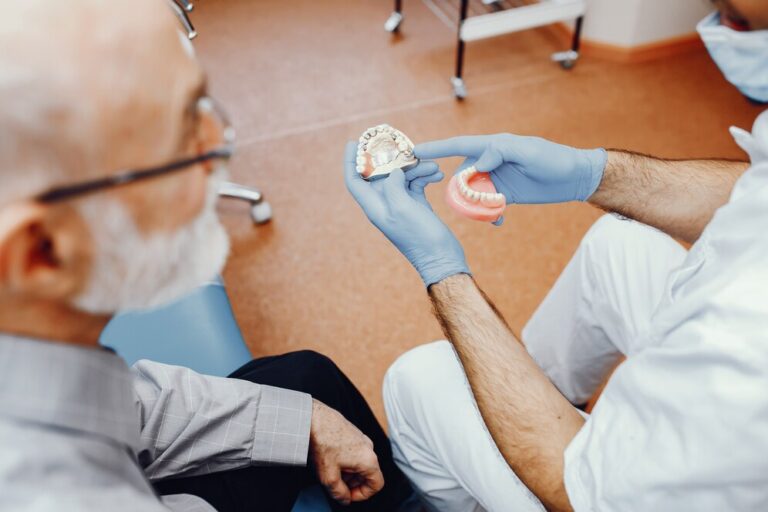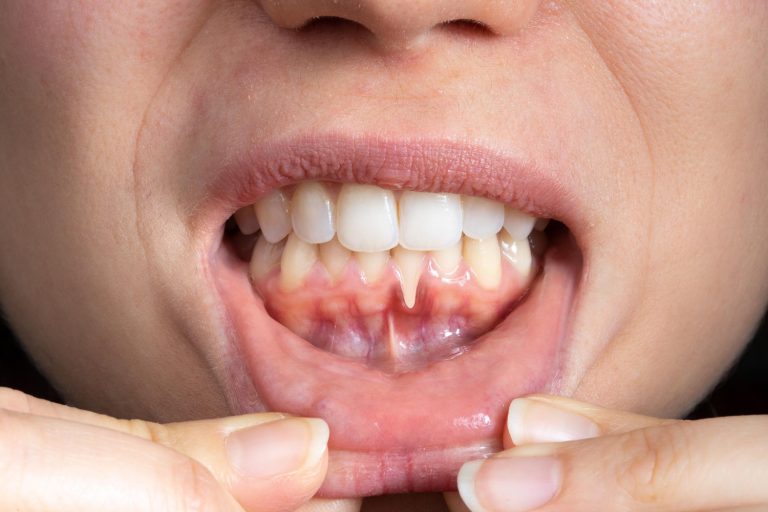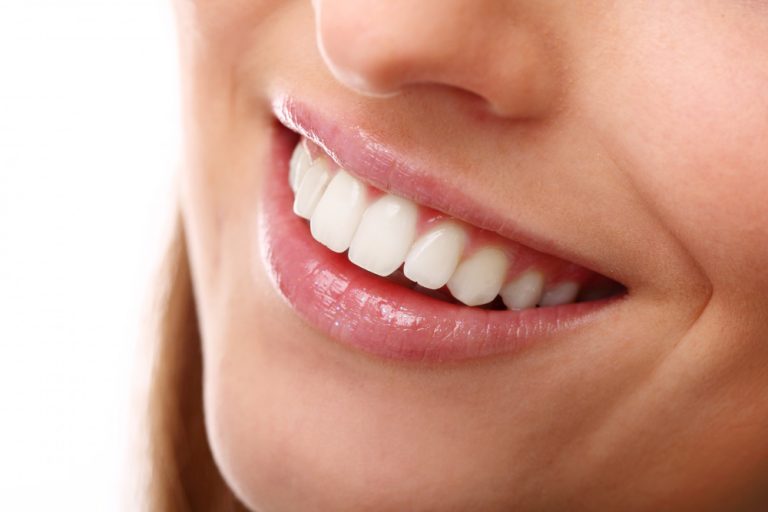Gum recession is not merely an aesthetic issue; it’s a dental health concern that can lead to exposed teeth roots, sensitivity, and ultimately tooth loss if left untreated. Often, the onset of gum recession is gradual, which makes it more challenging to detect. Therefore, it is essential to understand the signs, causes, and potential treatments for gum recession to maintain good oral health.
With that in mind, it’s worth learning and recognizing the early signs of gum recession, understanding its root causes, and exploring the various treatments available. Whether you’re battling with the condition or looking to prevent it, we’ll provide you with the necessary knowledge and preventative measures to ensure your smile remains healthy and confident.
Understanding the Causes of Gum Recession
Gum recession can result from various causes, which may often be linked to oral health habits or existing conditions. Identifying these triggers is essential to address the issue effectively and prevent further damage. Some common causes of gum recession include:
1. Aggressive Tooth Brushing: Brushing your teeth too hard or using a toothbrush with stiff bristles can damage and wear away gum tissue over time.
2. Periodontal Disease: Bacterial infections can destroy gum tissue and the supporting bone structure, leading to gum recession and possibly tooth loss.
3. Genetics: Some individuals may have a genetic predisposition for gum recession due to factors such as naturally thin gum tissue or weak enamel.
4. Teeth Grinding or Clenching: Excessive force placed on teeth through grinding or clenching can cause gum tissue to recede.
5. Tobacco Use: Smoking or using smokeless tobacco can irritate gums, causing the tissue to weaken and recede over time.
6. Hormonal Changes: Hormonal fluctuations, particularly in women, can make gums more susceptible to recession.
7. Misaligned Teeth or Bite: Uneven force distribution on teeth due to misalignment or an improper bite may contribute to gum recession.
Signs and Symptoms of Gum Recession
Detecting gum recession early is crucial for successful treatment and preventing further issues. If you notice any of the following signs or symptoms, consult with your dental professional:
1. Tooth Sensitivity: Exposed tooth roots may cause increased sensitivity to hot, cold, or sweet foods and beverages.
2. Longer Teeth Appearance: As gum tissue recedes, teeth may appear longer than usual.
3. Discoloration or Notching: You may notice a change in tooth color near the gum line or a notch-like indentation on a tooth.
4. Loose Teeth: Gum recession can weaken the supporting structures around your teeth, causing them to feel loose or shift in your mouth.
5. Inflammation or Bleeding: Receding gums may become inflamed or bleed during brushing or flossing.
Potential Consequences of Untreated Gum Recession
Leaving gum recession unresolved can lead to various problems that can negatively impact your oral health and overall well-being. Possible consequences include:
1. Tooth Root Decay: Exposed tooth roots are more susceptible to decay due to the absence of a protective enamel layer.
2. Tooth Loss: As gum recession progresses and supporting structures weaken, teeth may become loose and eventually fall out or require removal.
3. Aesthetics and Function: Receding gums can lead to unsightly gaps between teeth, making it difficult to speak or chew properly.
4. Increased Sensitivity: Untreated gum recession may lead to prolonged and heightened sensitivity, affecting your enjoyment of certain foods and beverages.
Gum Recession Treatment Options at Colorado Gum Care
At Colorado Gum Care, our experienced dental team offers a range of treatment options to address gum recession effectively:
1. Improved Oral Hygiene Practices: Adopting a gentler brushing technique, using a soft-bristled toothbrush, and flossing regularly can help prevent further gum recession.
2. Scaling and Root Planing: This deep-cleaning procedure involves the removal of bacterial plaque and tartar from beneath the gum line, promoting gum reattachment to the tooth surface.
3. Bite Adjustment: If misaligned teeth or an improper bite contribute to gum recession, orthodontic treatment or bite adjustments may be recommended.
4. Gum Graft Surgery: For more severe cases of gum recession, gum graft surgery may be necessary to restore damaged gum tissue and protect tooth roots from further damage.
5. Occlusal Adjustment: If teeth grinding or clenching is a contributing factor, your dentist may recommend treatments such as oral appliances or therapy to reduce the pressure on your teeth and gums.
Understanding the Causes and Treatments for Gum Recession
The journey to a healthy smile begins with healthy gums, and understanding gum recession is an important step in that journey. Trust the experienced team of dentists in Northglenn at Colorado Gum Care to provide specialized care, treatment, and support on your journey toward optimal gum health.
Reach out to us today to schedule an appointment and take the necessary steps to protect and rejuvenate your gums, ensuring a lifetime of healthy and confident smiles!







